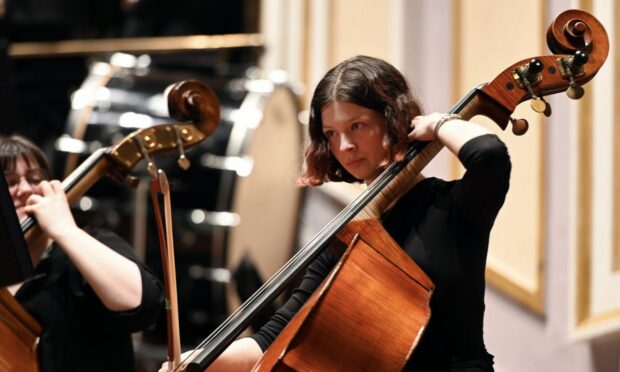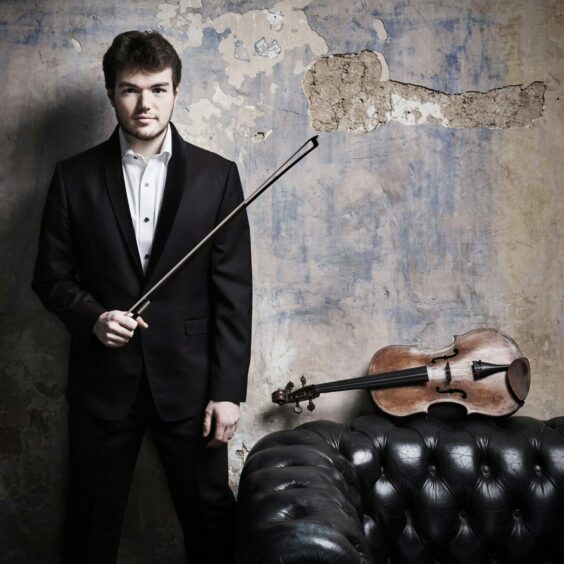The National Youth Orchestra of Scotland has developed into a superb group of players.
With a maximum age of 25, something like a hundred of them were able to fill the wide stage of the Caird Hall on Friday for an excellent concert of masterpieces from the first half of the 20th Century.
Dutch maestro at the helm
The orchestra’s high reputation allows it to attract some excellent conductors to work with them, and this summer the guest was Dutch maestro Jac van Steen.
He did appear in the Caird with the RSNO a few years ago, and works with most of the major British orchestras.
He also makes something of a speciality of performing with young musicians from the various colleges.
Hugely ambitious programme
He conducted a hugely ambitious programme of works by Prokofiev, Bartok and Ravel.
All three were great orchestrators, though ironically Bartok’s death prevented him from completing his beautiful Viola Concerto.
It was commissioned in 1944 by the Glasgow-born virtuoso William Primrose. He began his career as a violinist, touring Britain in the 1920s.
He appeared many times in concerts at the Caird Hall before moving to the USA, where he switched to the viola. He became regular collaborator with such eminent soloists as Jascha Heifetz (violin) and Gregor Piatigorsky (cello).
When he died of leukaemia in 1945 Bartok had completed the solo part but had not done more that sketch out the orchestration. This was completed by his friend Tibor Serly for the 1949 premiere.
Showcasing the beautiful tone
It is a beautiful piece, using the instrument’s full range, but always centred on its wonderful full-bodied tone.
The orchestra is also given many attractive solos to interplay with the viola.
It seems it was Bartok’s tribute to Primrose’s Scottish background that he introduced references to the popular Scottish song ‘Comin’ through the Rye’ – a popular encore piece sung by all the famous sopranos of the day.
The soloist was a brilliant young player rapidly making a reputation for himself.
Timothy Ridout is a BBC New Generation Artist and has been given a wide range of opportunities to gain experience as a result.
His performance was superb, making this little-known work immediately attractive and the audience lapped up what seems likely to have been the Concerto’s first performance in these parts.
The main item in the programme was the compilation of two suites from Ravel’s orchestral masterpiece Daphnis and Chloe.
This was commissioned in 1912 for Diaghilev’s Ballets Russes, for a Paris premiere the year before the mould-breaking Rite of Spring of Stravinsky.
It is a fabulous piece taking us from a wonderful depiction of dawn through dramatic events that conclude with a celebratory general dance.
Prokofiev’s Cinderella
The huge orchestra sounded great in the famous Caird acoustic, with a rarely-heard wind machine and three harps adding to the sound.
The concert began with some excerpts from Prokofiev’s ballet Cinderella. Not as famous as his Romeo and Juliet, composition was interrupted when the Nazis invaded Russia in 1940.
The composer switched his attention to his operatic masterpiece War and Peace. When peace was restored he returned to it, and much of the music clearly celebrates that peace, with a particularly delectable waltz sequence.













Conversation